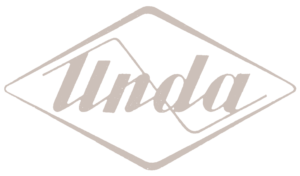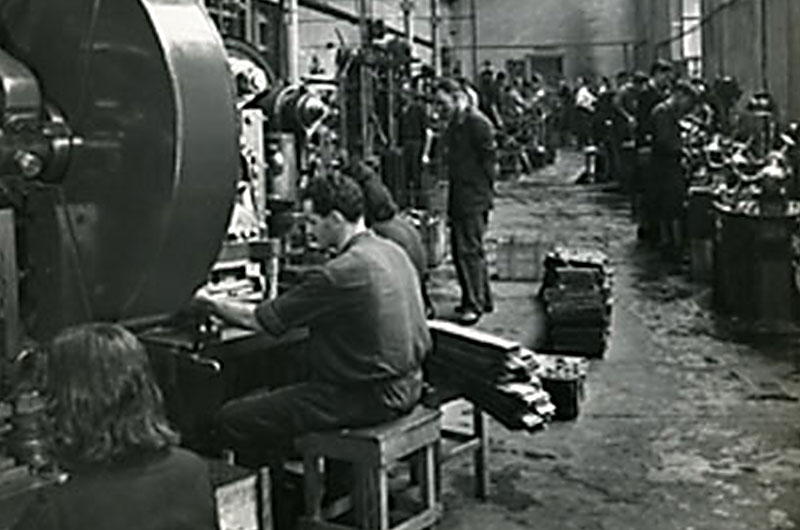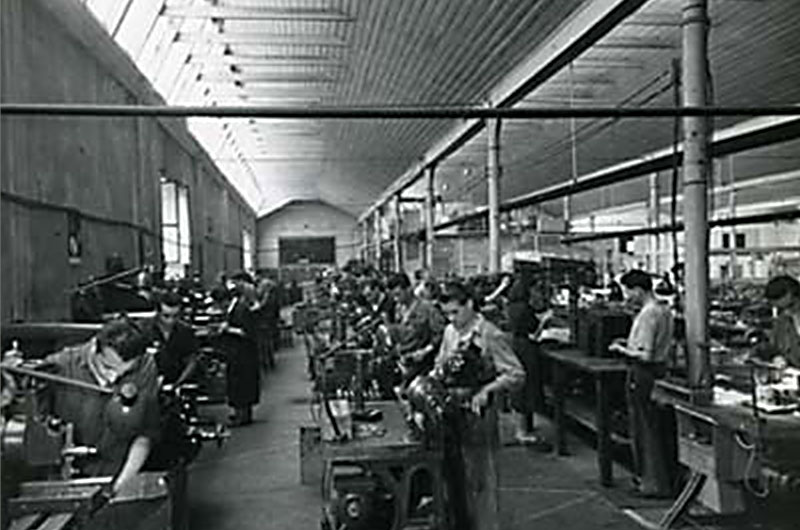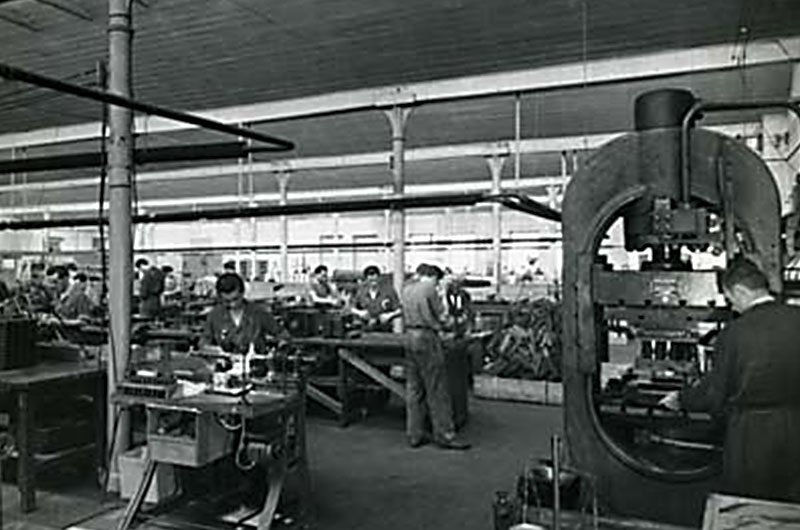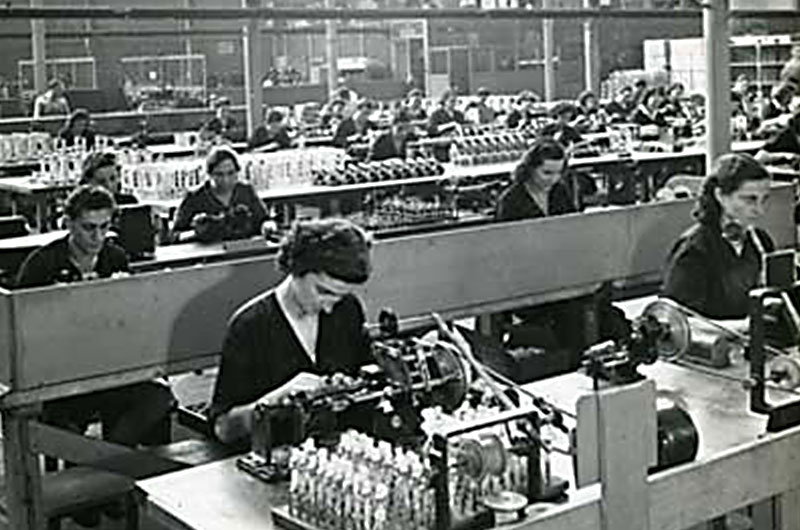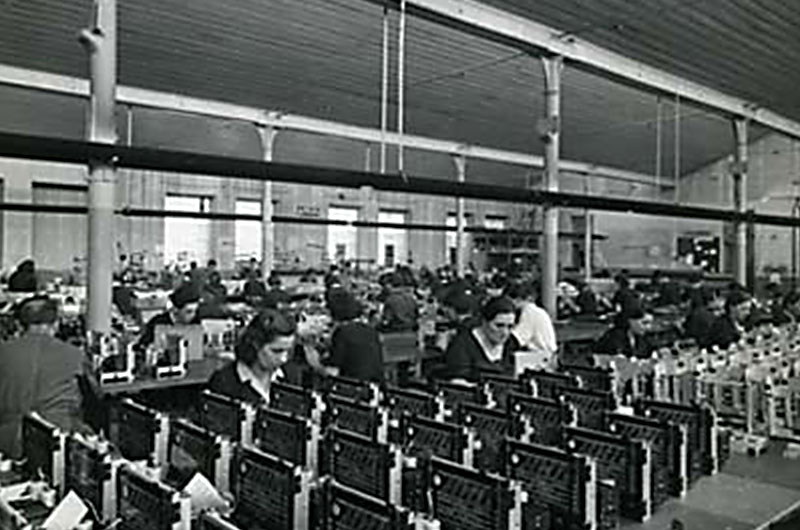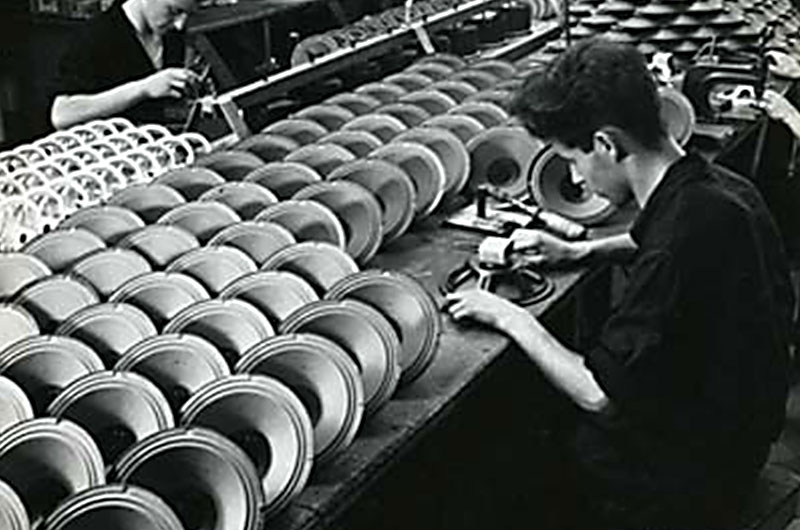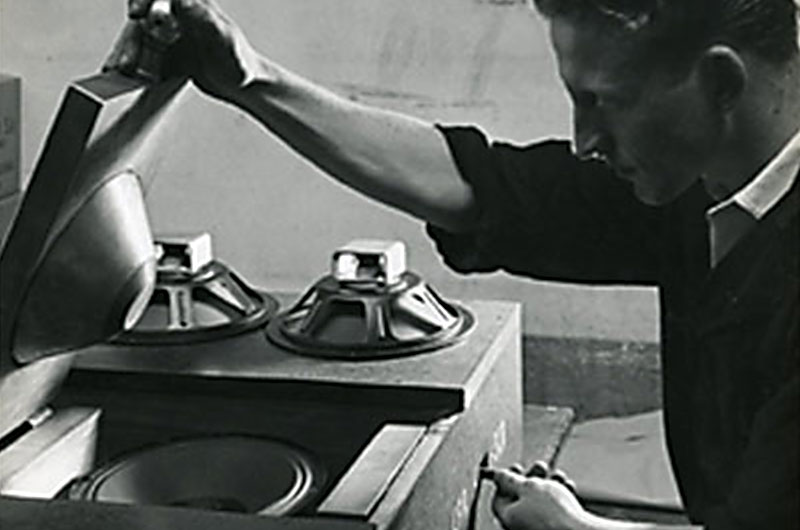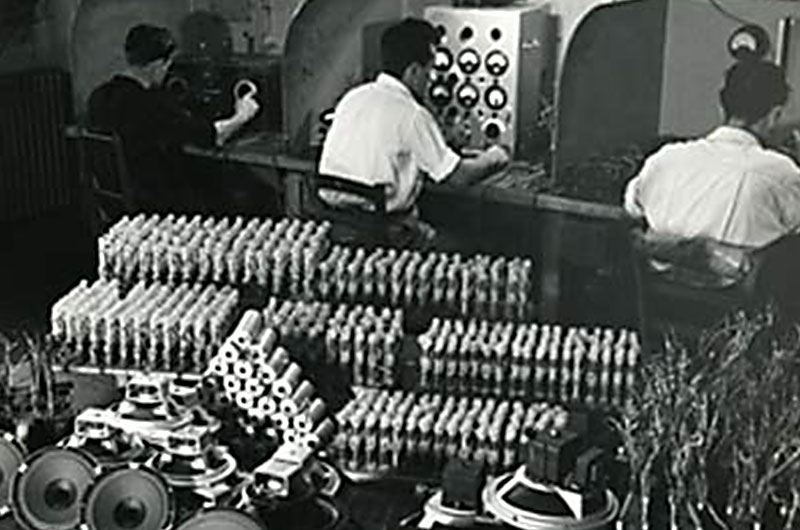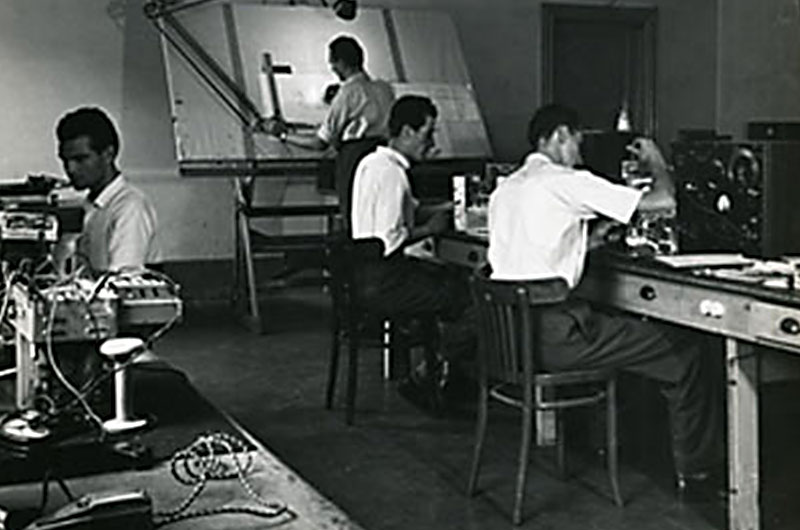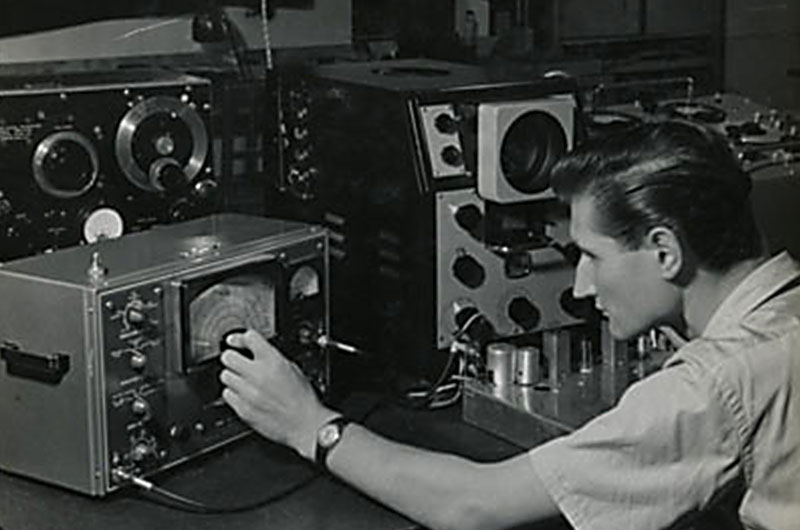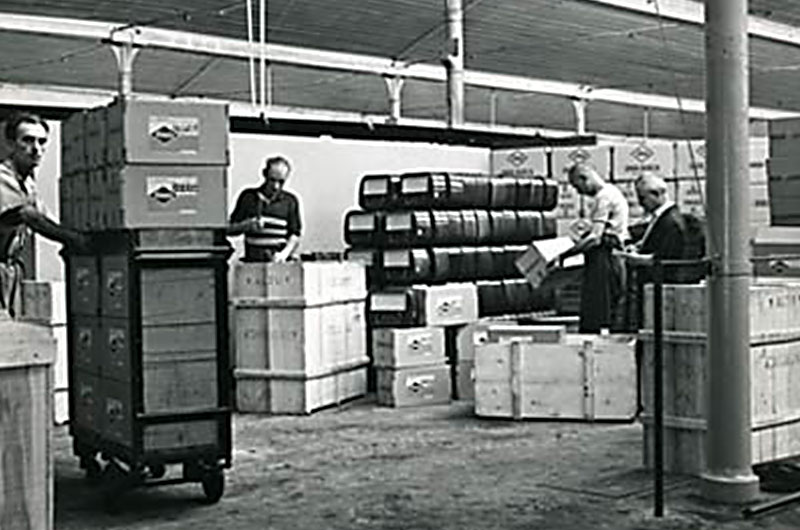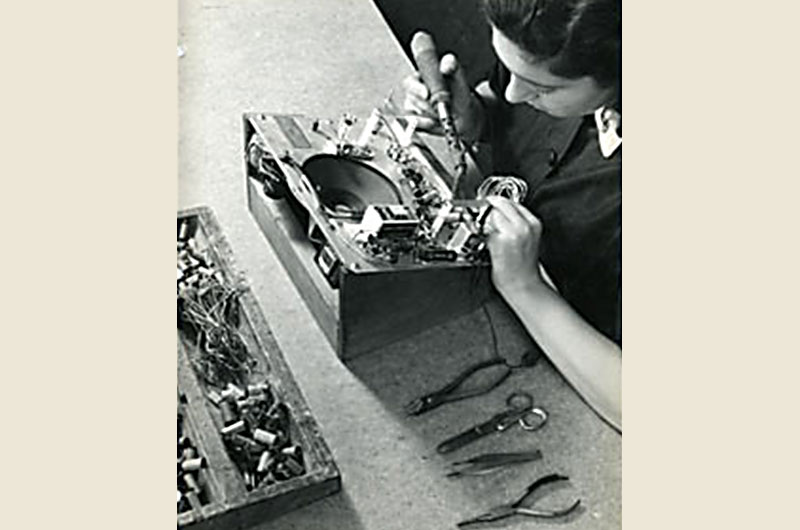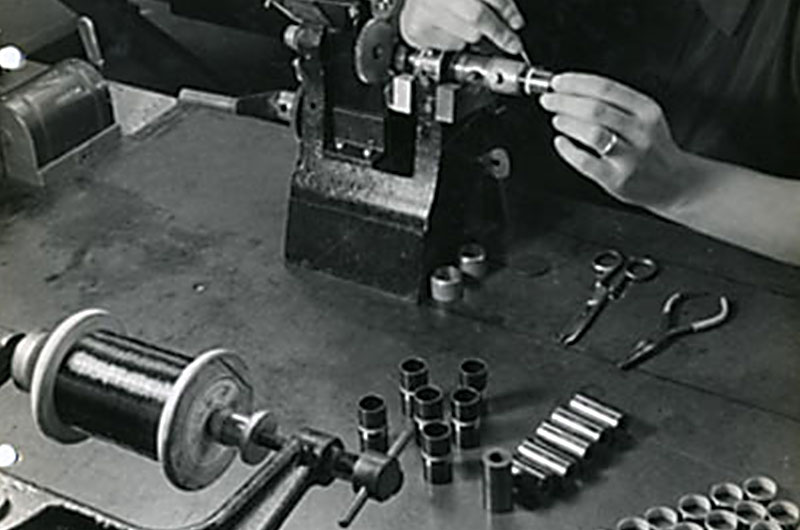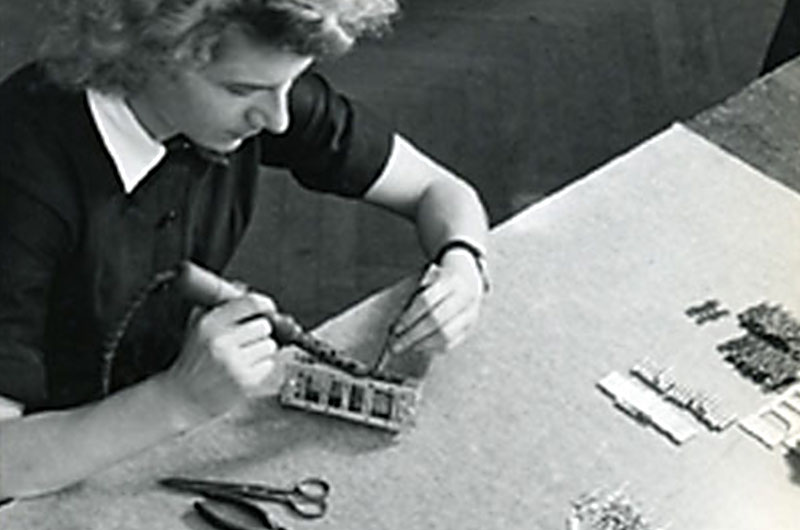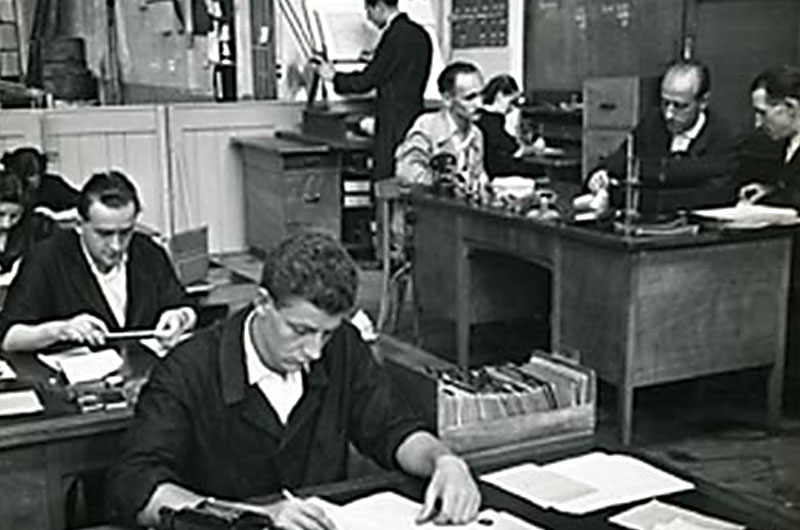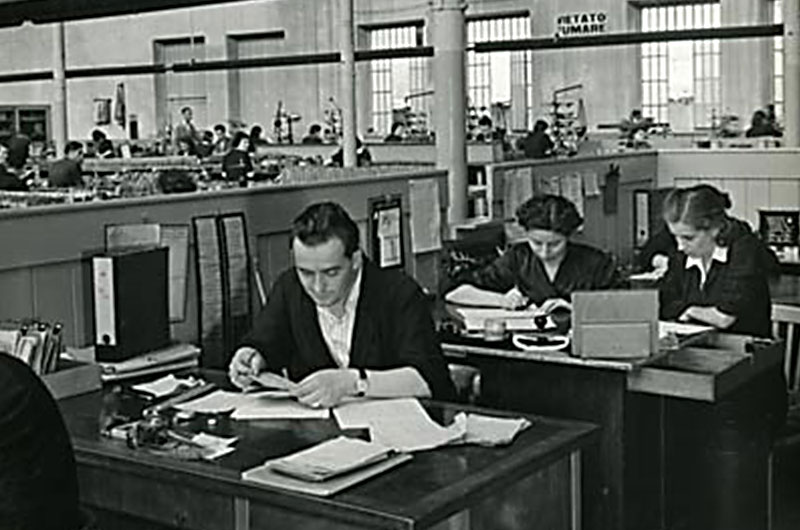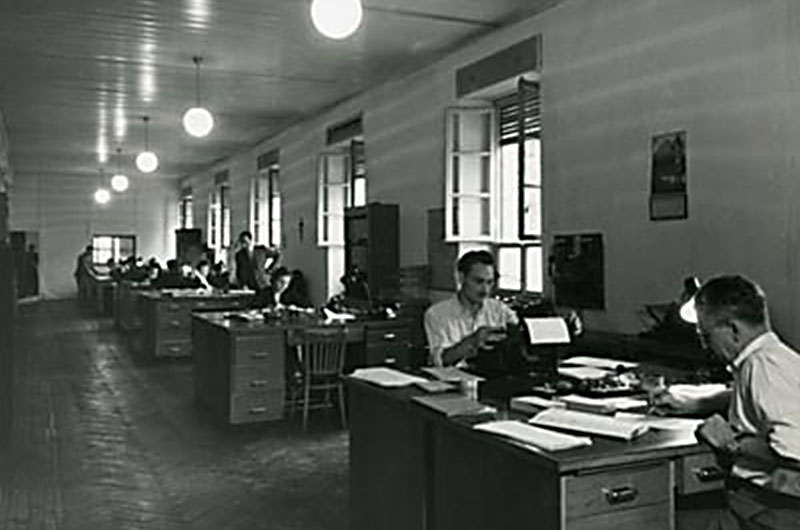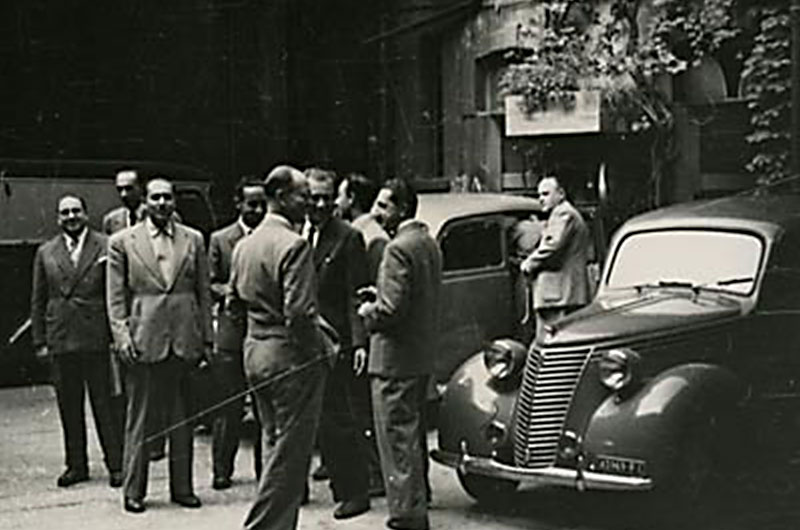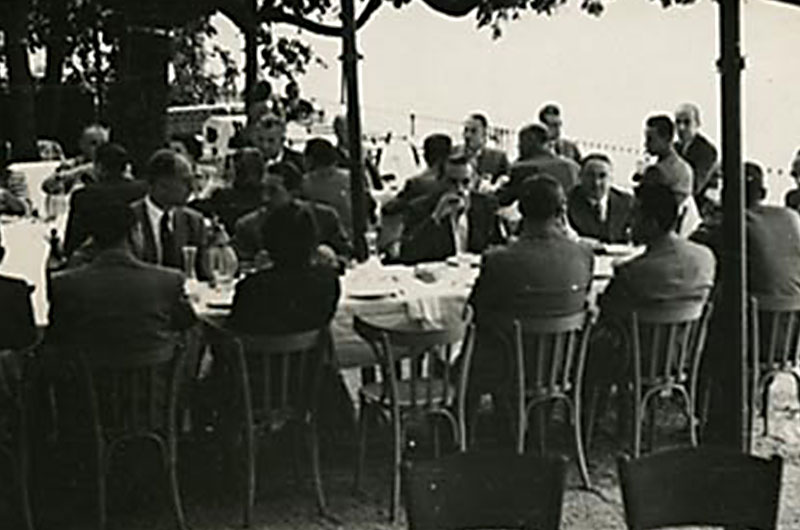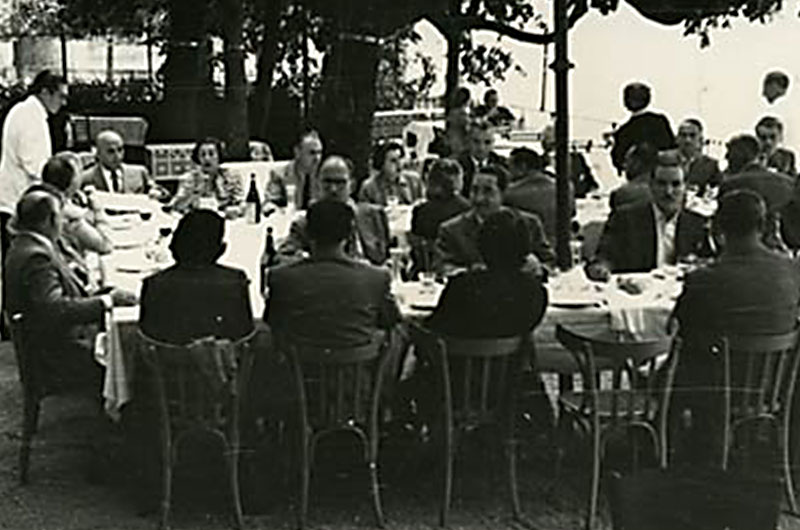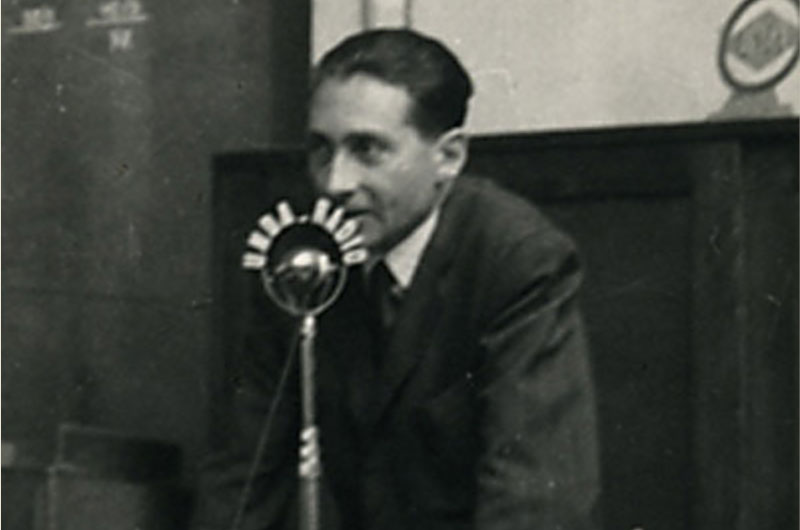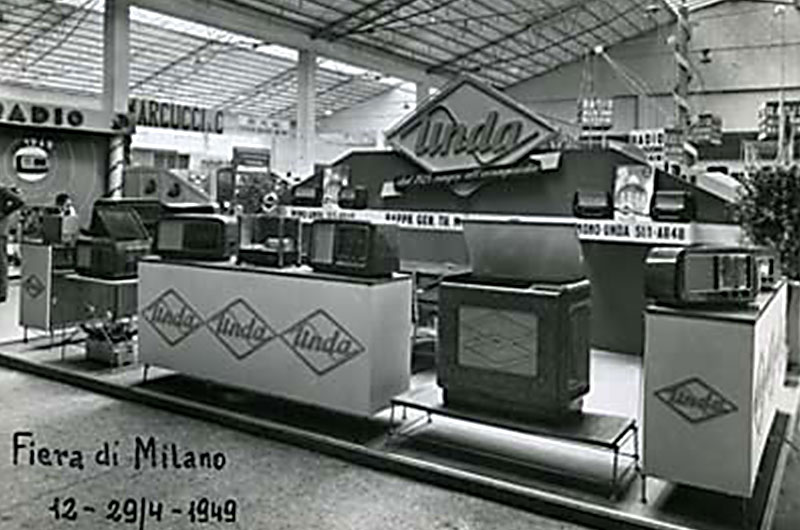On May 8, 1945, the war finally came to an end in Europe. Pope Pius XII, on May 9th, addressed the world with a long radio message which began with the words: “Finally this war has ended, this war which, during almost 6 years, has kept Europe prisoner of the most atrocious sufferings and the most bitter sorrows….”
In 1946 production activity picked up again, albeit with the greatest of difficulties. At the Milan Trade Show of that year, called “The Recovery Fair”, many companies producing radios and accessories were present with their products: Geloso, Watt Radio, Nova, Gino Corti, Microfarad, ing. R. Parravicini, Philips, O.S.T., Allocchio Bacchini, and so on. Of course Unda Radio, which, that year, became a joint-stock company, could not fail to be present.
In 1947, the new editions of the National Radio Trade Shows resumed. They will be held until 1951 in the Palazzo dell’Arte al Parco. The war had been over a couple of years now, and the radio producing companies tried their best to continue their production among a thousand difficulties. Due to the poor economic conditions, people could not afford to buy a radio set. There was also the additional cost of the subscription to radio listening. The wartime cost was 82 lire, but it jumped to 420 lire at the end of the war. The difficult political events of that time could not ease these hardships. The great project of “a radio in every home”, was in the heart of many, but in the homes of few.
On March 17, 1948, ANIE (Associazione Nazionale Industrie Elettriche, established on August 29, 1945, just 4 months after the end of the war), in agreement with RAI, published a competition to further radio production and help the spread of radio transmissions. This competition was open to all companies for the realization of a “popular” radio set to be called AR48. At the XV National Radio Trade Show, the competing companies could present their projects, which had to follow the required specifications, one of which was that the price could not be higher than Lit. 25,000. Many companies were present with many projects, but only eight had a positive outcome: Radiomarelli, OREM, Nova, Altar, Watt, Siemens, CGE and Unda Radio. Though the winning designs offered several advantages, the competition was not as successful as anticipated, so that at the XVI Trade Show in September 1949, many winning companies did not exhibit a product. Unda, on the other hand, had a modified version of the AR48, while Nova would show model AR48B in 1951.
Unda, at the XV National Radio Trade Show came out with two big innovations: a cylindrical hi-frequency stage and a spread band device, both installed for the first time in Quadri Unda 64/5, a five tube plus magic eye superhet (ECH4-EBF2-EF9-EL3-AZ1-6E5) capable of receiving 4 wavebands (LW-MW-SW-VSW with spread band).
In 1949, the Company’s stock was increased to Lit. 25,100,100 while Unda Radio was preparing festivities for the celebration of its silver anniversary in business. On the 20th of September, at a banquet for all the sales agents, Cav. Gianni Vacca-Ajmasso, the oldest sales agent, read aloud a poem written by him and dedicated to the “Unda Family”.
For the 1949-1950 business year, Unda Radio had nine new radio models ready, bearing the Company logo emblazoned, for the occasion, with a branch of oak leaves and one of laurel leaves, to symbolize the silver anniversary of the Company. These new models were: Quadri Unda 64/5; Mono Unda 51/1 (AR48); Sex Unda 66/1; Tri Unda 53/19; Tri Unda 63/6; Tri Unda 63/4; Tri Unda 63/5; Tri Unda 53/18; Quadri Unda 84/1. They were officially shown at the first International Television Trade Fair. During that exhibition, the first television connection between Turin-Eremo and Milan took place with some success. Again Unda was present, with its television model 15-22/1,garnished with 16 tubes, of which most had a double function, based on a 25 pictures per second at 625 lines each, which was the American standard.
The FM, strictly linked to television reception, had been researched in Unda’s work-shops, to be applied to television audio as well as to radio reception. At the XVII National Radio Trade Show in September 1950, Unda came out with the first FM radio receiver, the Mono Unda A. 51/1, a five tube fixed band superhet, capable of receiving any FM transmission within 88 and 108 MHz. On that occasion, it also showed its first AM-FM radio receiver, the Quadri Unda 104/1, capable of receiving MWs, 2-band SWs and the USWs for FM.
As early as 1948 Unda Radio began to organize a TV lab and to instruct specialized personnel, under the direction of Ing. Boselli, a capable TV technician from Safar. The lab was equipped to produce every single part for a television set, except the cathode ray tubes.
At the XVIII National Radio and Television Trade Show in September 1951, Unda exhibited and sold finished television sets, in addition to chassis and accessories for the construction of sets to be sold to the television industry. In a gallery dedicated to television, Unda exhibited four functioning television sets: two with 12″ cathode ray tube and two with 16″ cathode ray tube.
In 1952, the Company directed its efforts to professional television, by producing both synchronized-signal generators (e.g. model GSS 62/5), and line-control generators, such as model GCL7/1. Meanwhile the Company’s stocks was increased to Lit. 52,200,000.
At the Milan Fair in 1953, Unda exhibited its first refrigerator model, clearly showing its product diversification attempts in order to remain at the forefront of technological innovations. This line, however, had to be abandoned because production costs could not keep pace with price reductions practiced by competing companies.
In 1954 there was another capital stock increase to Lit. 78,300,000. That same year the Company celebrated thirty years in business and introduced important innovations at the XX National Radio and Television Trade Show, such as the first pocket-size superhet, named Mono Unda 41/3 “Mascotte”and a remote-control television. This pocket-size radio receiver, nick-named “Mascotte”, was out-fitted with a four tube (1V6-1AH4-1AJ5-1AG4) mini superhet circuit, and was battery operated or connected to the line by a power supply. Its dimensions were cm.17 wide X 9 high X 4 deep. This model encompassed technical as well as aesthetic qualities. The front was made of gold-coloured plastic with a slot for personalized, interchangeable photos. The original set, for demonstration purposes, contained the picture of Lisa Glauber, Max’s daughter. The ferrite antenna was housed in the handle used to carry around the little radio.
1946-1955 the “Good Shape” is born
The design concept, well established by now, can be appropriately defined as the “good shape”, created by the correct utilization of production techniques and materials, by the study of the use of the object and its functions, with great emphasis on aesthetics.
The Radio and Design
This is the decade during which the radio becomes an object used by the masses. The miniaturization of the tubes permits the production of compact radio sets, and the dominant style of design is “horizontal”. The United States, always more advanced technologically, export new aesthetic concepts and our radio sets, though a far cry from the higher American standard, our sets become more attractive, colourful and modern.
